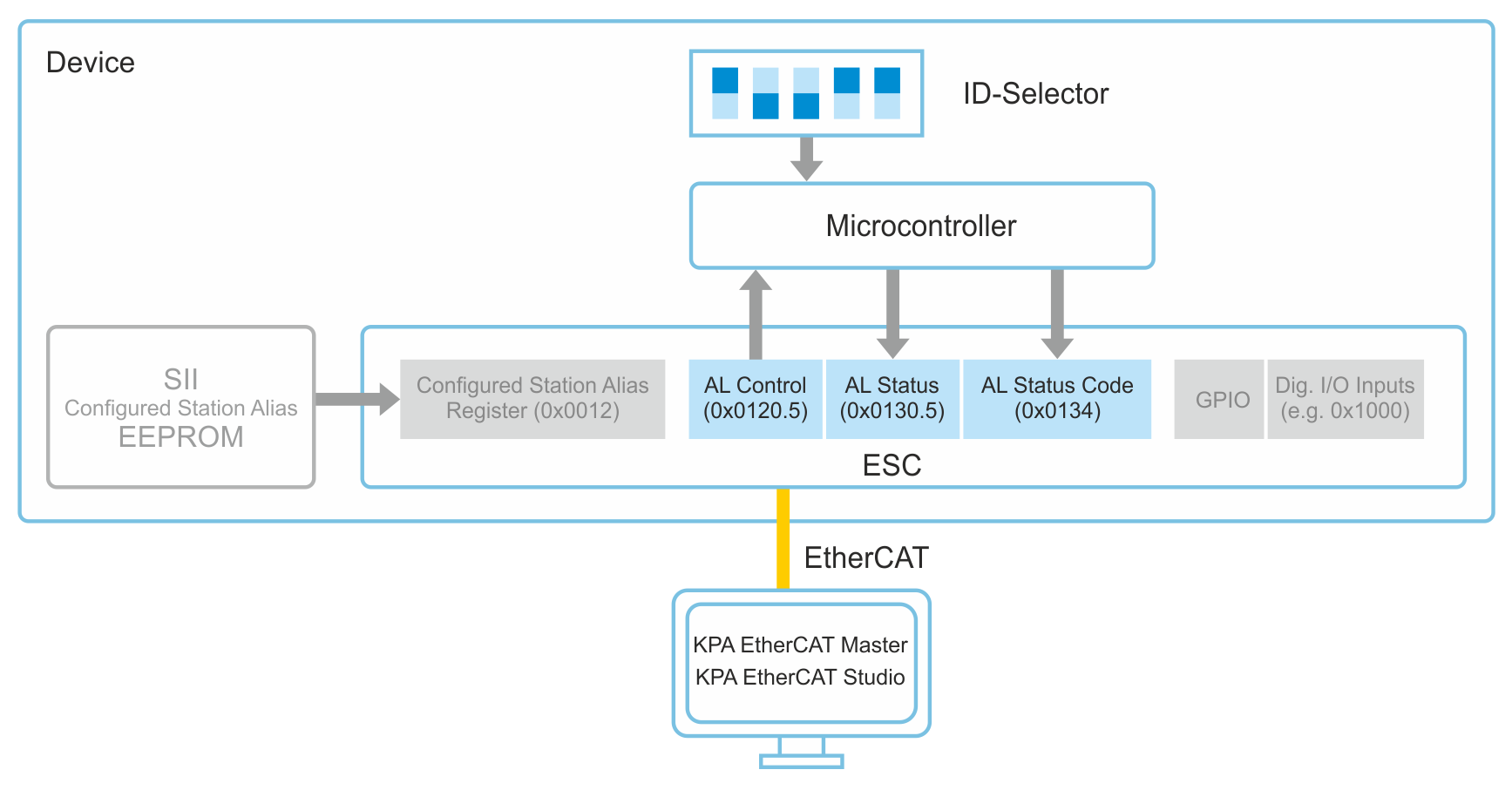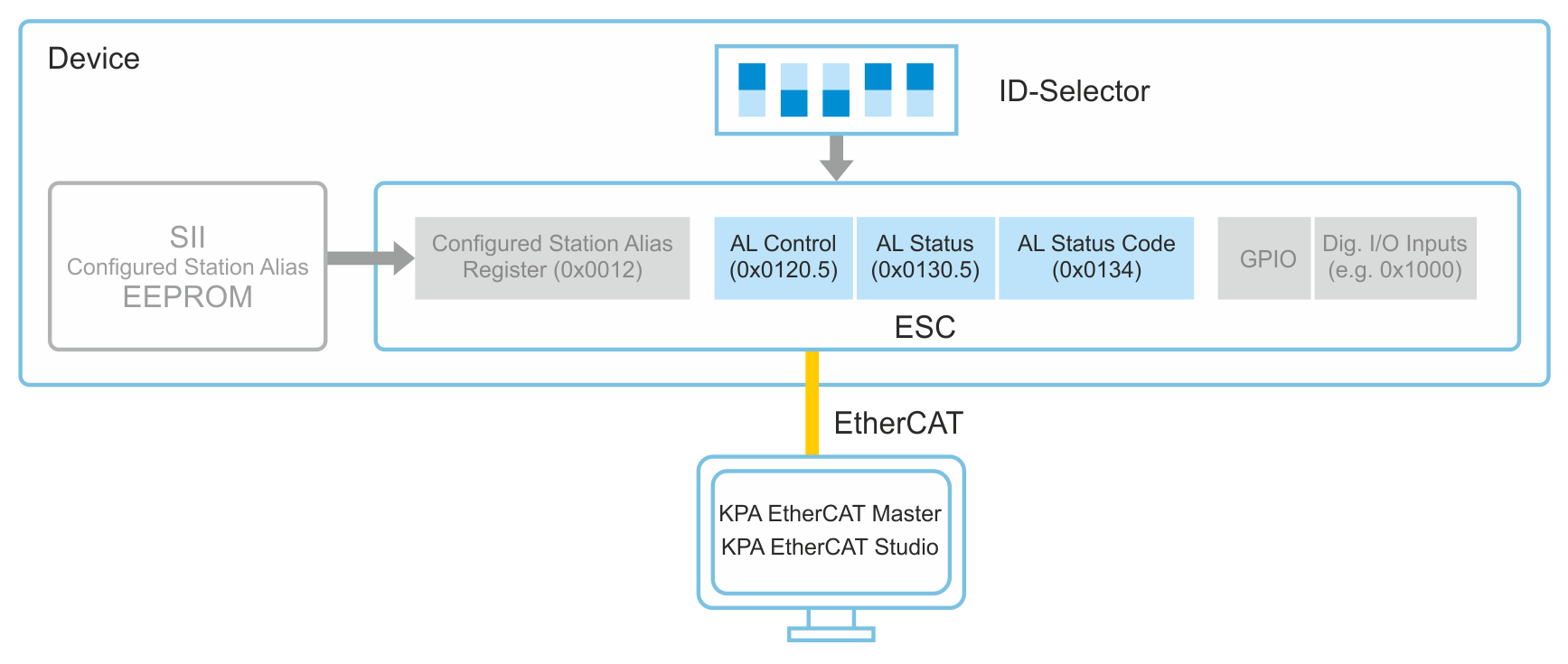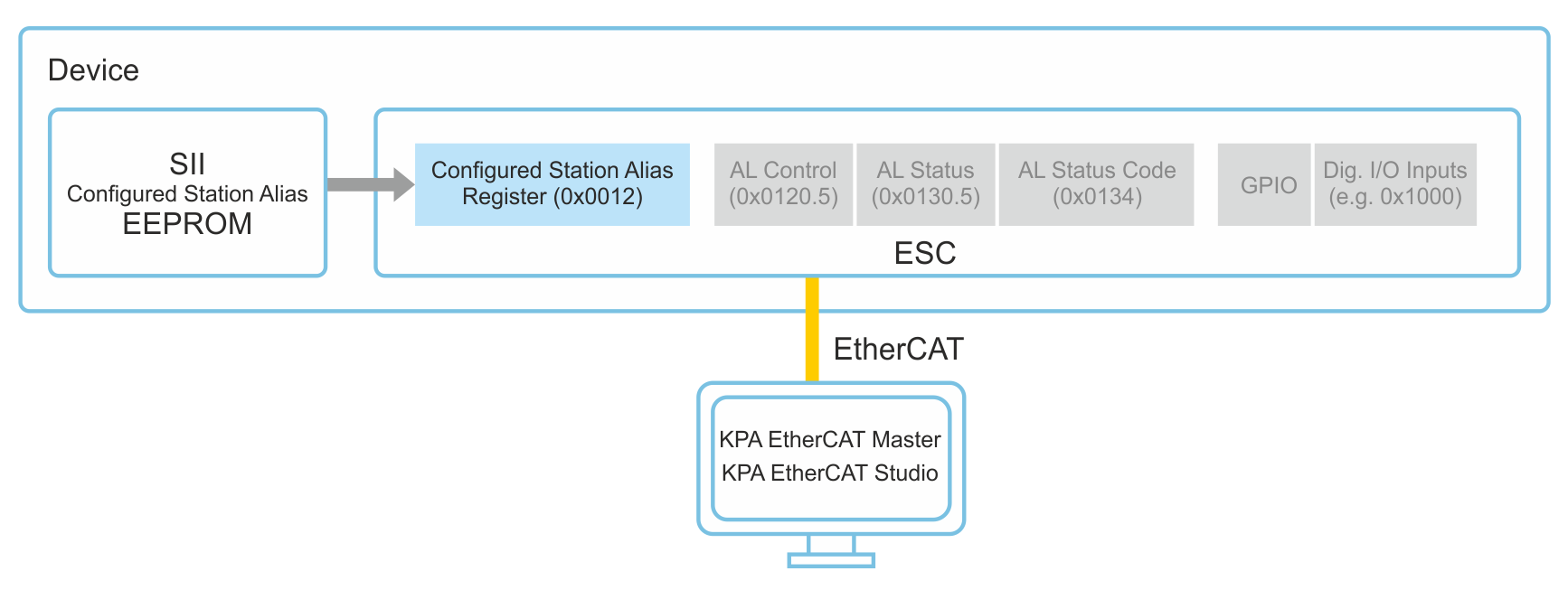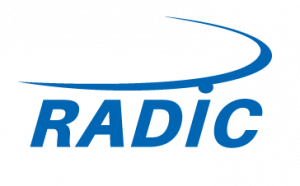Explicit Device Identification
There are different ways of slave device addressing in EtherCAT. The addressing choice depends on device capability and user requirements.
Explicit Device Identification is necessary for certain use cases such as :
- Applications where Hot Connect feature is used
- Application where cable swapping is not allowed
- Where each individual device must have a unique address
- Applications where Safety functionality is implemented.
EtherCAT technology and KPA offer 3 different mechanisms for setting the Device ID. These methods are defined in ETG.1020 Protocol Enhancements. These methods are as following:
- Requesting ID

- Direct ID

- Configured station alias

Explicit device identification (Configured station alias, Requesting ID and Direct ID) is a modern way of the device identification. In most cases it is much faster than identification via an EEPROM alias. Older devices (from before release of the ETG 1020 standard, 01.2016) can only be identified via their EEPROM alias.
The choice of using one of the above methods depends on what slave devices support, and by the industry requirements. For example all EtherCAT slave devices are required to support Explicit Device Id via physical switches. Please note, not all devices support physical switches so to properly configure the identification method, please refer to the vendor documentation of your devices.
For further details, please, refer to KPA EtherCAT Master documentation.
